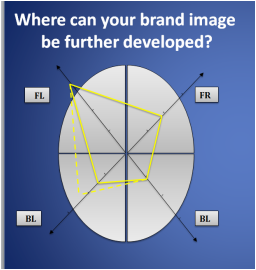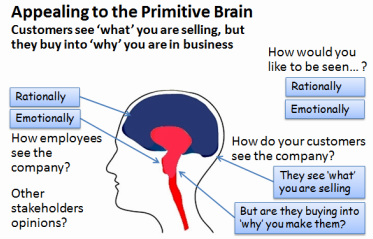Buying your "Why" and not your "What"
MRI scans have shown that decision-making takes place principally in the deeper (older) areas of the brain at the level of ‘Emotions and Instincts’ … it is only later rationalised in the cortex.
As an example, loyal customers don't just buy at IKEA because the goods represent good value for money (the 'what'). They know they will get good quality and design at affordable prices because IKEA's roots lie in the company's associated pride with its Swedish traditions (the 'why').
MRI scans have shown that decision-making takes place principally in the deeper (older) areas of the brain at the level of ‘Emotions and Instincts’ … it is only later rationalised in the cortex.
As an example, loyal customers don't just buy at IKEA because the goods represent good value for money (the 'what'). They know they will get good quality and design at affordable prices because IKEA's roots lie in the company's associated pride with its Swedish traditions (the 'why').




